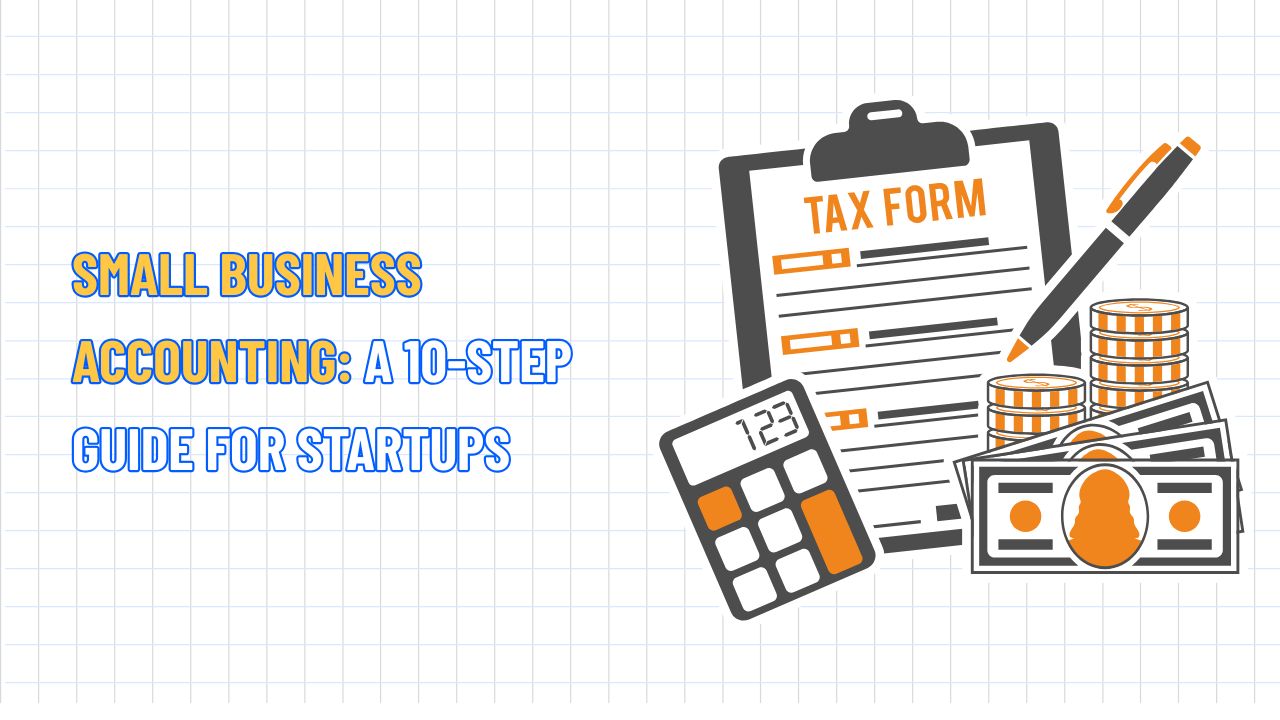Top 19 Small Business Tax Deductions That Help You Save Money
Table of Contents Hide
As a small business owner, navigating complex tax regulations can be a significant challenge. However, understanding and leveraging small business tax deductions can substantially reduce your taxable income and save you thousands of dollars each year. Join NextSky as we dive into the details to ensure you don't miss any savings opportunities.

What are tax deductions?
A tax deduction is an expense you can subtract from your taxable income to lower the amount of tax you owe. For small businesses, these deductions can range from office supplies to employee salaries, as long as they meet the IRS criteria of being "ordinary and necessary" for business operations.
For example, if your e-commerce business has $100,000 in revenue and you claim $25,000 in deductible business expenses, your taxable income drops to $75,000, saving you thousands in taxes depending on your tax bracket.
Read more: What is A Small Business? A Comprehensive Guide to Definition
Top 19 comprehensive tax deductions for small businesses in 2025
Below is a detailed breakdown of the best tax deductions for small businesses you can claim, including examples and IRS guidance.
1. Startup and organizational costs
New businesses can deduct up to $5,000 in startup costs, such as market research, legal fees, or advertising, plus $5,000 in organizational costs, like LLC or corporation formation fees, in the first year of operation. The total for each category can't exceed $50,000; amounts over the threshold are amortized over 180 months.
Examples:
- Legal fees to draft a partnership agreement.
- Advertising costs for a pre-launch marketing campaign.
- Consulting fees to set up your Shopify store.
Tip: Keep detailed records of pre-opening expenses, as they're often closely scrutinized by the IRS.
2. Home office deduction
If you run your business from home, you can deduct a portion of the related housing costs. To qualify, the space must be used regularly and exclusively for business and serve as your principal place of work. Here are two calculation methods to consider:
- Simplified method: Deduct $5 per square foot, up to 300 square feet, for a maximum of $1,500.
- Standard method: Deduct a percentage of actual expenses, including rent, utilities, and mortgage interest, based on the square footage used for business.
Example: If your home office occupies 10% of a 2,000-square-foot house and total annual costs (rent, utilities, etc.) are $24,000, you can deduct $2,400 using the standard method.
Tip: Regularly photograph your workspace and keep floor plans to prove exclusive use in case of an IRS audit.
3. Business meal expenses
You can deduct 50% of meal costs when they're for business purposes, such as client meetings or team lunches. In contrast, meals for employees—such as pizza during late nights or at company events — can be deducted at 100%.
Example: A $200 client dinner allows a $100 deduction, while a $500 employee appreciation event is fully deductible at $500.
Key tip: Note the business purpose, date, location, and attendees on receipts to substantiate expenses if needed easily easily.
4. Advertising and marketing
All costs related to promoting your business are 100% deductible, including online ads, website development, and content creation.
Examples:
- Google Ads or social media campaign expenses.
- Hiring a freelancer to design a Shopify theme or sales pages.
- Printing business cards, brochures, or other promotional materials.
Helpful tip: For e-commerce businesses, consider using NextSky's SEO-optimized Shopify themes, such as Glozin or Umino, to boost your online presence—these costs qualify as valid marketing deductions.
5. Software subscriptions
Costs for software subscriptions or essential SaaS platforms are fully deductible. This helps offset operational burdens and optimize performance.
Specific examples:
- Shopify subscription for running your e-commerce store.
- Accounting software, such as QuickBooks, is used for efficient financial management and record-keeping.
- Project management tools, such as Trello or Asana, are utilized to track workflows and manage tasks effectively.
Helpful tip: Pair software costs with NextSky's API integration services to streamline business operations and maximize deduction benefits.
6. Vehicle use for business
You can deduct vehicle expenses via the standard mileage rate or the actual cost method. The standard mileage rate is $0.70 per mile. For exact costs, deduct items like gas, repairs, and insurance based on the business-use percentage. Driving 5,000 miles for business allows a $3,500 deduction using the standard rate (5,000 × $0.70 per mile).
Helpful tip: Use a mileage-tracking app to accurately log business trips and avoid mixing personal and business use.
7. Employee salaries and benefits
Salaries, bonuses, and employee benefits, such as health insurance or retirement contributions, are fully deductible as long as they're reasonable and related to actual services provided. For independent contractors, issue Form 1099-NEC for payments over $600 annually to stay compliant.
Example: A full-time employee's $60,000 salary is fully deductible, along with their 401(k) contributions.
8. Business insurance
Business insurance is 100% deductible, covering types like liability, property, and workers' compensation. For instance, $2,000 annually for general liability insurance is fully deductible.
Helpful tip: If you are self-employed, you can also deduct self-employed health insurance premiums for yourself and your family on Schedule 1 (Form 1040), which can reduce healthcare costs.
9. Travel expenses
Business travel expenses are fully deductible if the trip is away from your tax home and requires an overnight stay.
- Airfare for trade shows.
- Hotel costs during client meetings.
- 50% of incidental meal expenses.
Helpful tip: Maintain a detailed travel log with receipts, dates, and business purposes to easily substantiate deductions.
10. Office supplies and furniture
Expenses for office supplies, such as pens and paper, as well as furniture like desks and chairs, are 100% deductible in the year they are purchased. For example, a $1,000 office chair plus $500 in supplies allows for a total deduction of $1,500. Leverage the de minimis safe harbour rule to immediately expense items under $2,500 without depreciation, simplifying tax filing.
11. Depreciation and Section 179
For business assets such as equipment or machinery, deduct costs over time through depreciation or immediately under Section 179, up to $1.25 million in 2025. A $10,000 computer for your e-commerce business can be fully deducted under Section 179 if placed in service during the tax year.
Helpful tip: Combine with bonus depreciation to write off 100% of qualified assets, such as computers, office equipment, or furniture.
12. Professional services
Fees for lawyers, accountants, or business consultants directly related to operations are fully deductible. For example, $3,000 for a tax advisor to optimize deductions is 100% deductible.
Helpful tip: Consider services like Bench or Rippling for accounting and payroll management to maximize deductions while ensuring full compliance with tax regulations.
13. Internet and utilities
Internet, phone, and utility costs are deductible based on the percentage of business use. For example, if 50% of a $200 monthly internet bill is for work, deduct $1,200 annually.
Helpful tip: For home-based businesses, calculate the business-use percentage accurately to comply and avoid IRS scrutiny.
14. Rent and repairs
Business facility rent and necessary repairs, like fixing broken windows, are 100% deductible. For example, $12,000 annual retail space rent is fully deductible. For home offices, include rent or mortgage interest in deductions to leverage tax benefits for your workspace fully.
15. Bad debts
Uncollectible debts from customers or suppliers are deductible if included in gross income and are directly related to the business. A $2,000 unpaid client invoice qualifies as bad debt. Keep complete documentation of collection efforts to support your claim.
16. Taxes and licenses
Certain taxes, including state income taxes, payroll taxes, property taxes, and business license fees, are deductible. For example, a $1,500 business license fee is fully deductible from taxable income. While federal income taxes aren't deductible, state and local taxes qualify to maximize benefits.
17. Education and training
Sole proprietors and LLCs can deduct charitable contributions on Form 1040, Schedule A, while corporations treat them as business expenses. A $1,000 contribution to a qualified charity is deductible. Verify the organization's status with the IRS to ensure eligibility.
18. Charitable contributions
Small businesses that qualify (like sole proprietorships, partnerships, S corporations) can deduct up to 20% of qualified business income under the QBI deduction. With $100,000 in QBI, deduct $20,000 to reduce tax liability significantly. This phase-out applies to high-income earners; therefore, consult a tax expert to determine your eligibility.
19. Qualified business income (QBI) deduction
Qualifying small businesses, including sole proprietorships, partnerships, and S corporations, can deduct up to 20% of qualified business income under the QBI deduction. For $100,000 in QBI, deduct $20,000 to lower your tax obligation substantially. This deduction phases out for high earners, so consult a tax professional to confirm eligibility and optimize benefits.
Read more: The Ultimate Guide to Small Business Expense Tracking
Unique strategies to optimize tax savings
To stand out from other resources, here are advanced tips for small business owners to maximize deductions:
- Leverage technology for record-keeping: Use accounting software like QuickBooks or Xero, integrated with your Shopify store via NextSky's API solutions, to track expenses and ensure no deductions are missed automatically.
- Stack deductions for maximum impact: Combine Section 179 with the home office deduction to immediately write off equipment used in your home workspace.
- Plan year-end purchases: Make strategic buys, such as equipment or software, before December 31 to claim deductions in the current tax year.
- Hire family members: Employing relatives not only deducts their salaries but may also qualify for additional tax perks, such as child or dependent care credits.
- Review prior returns: If you missed deductions in past years, amend returns within three years to claim carryover losses or overlooked expenses, fully optimizing your tax benefits.
Read more:
Maximizing small business tax deductions is an effective way to reduce your tax burden and reinvest savings into your company. By understanding which business expenses qualify and keeping meticulous records, you can fully leverage deductions, such as those for a home office.










